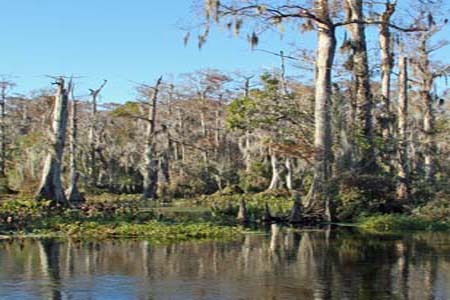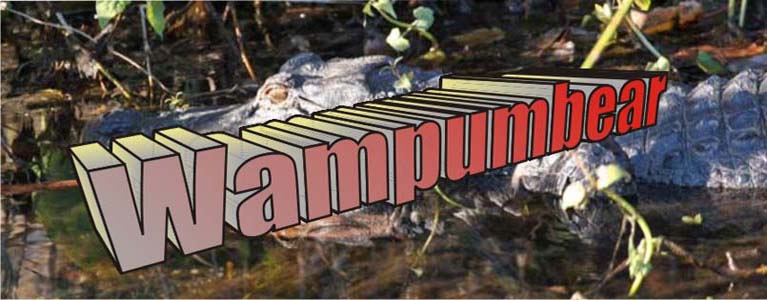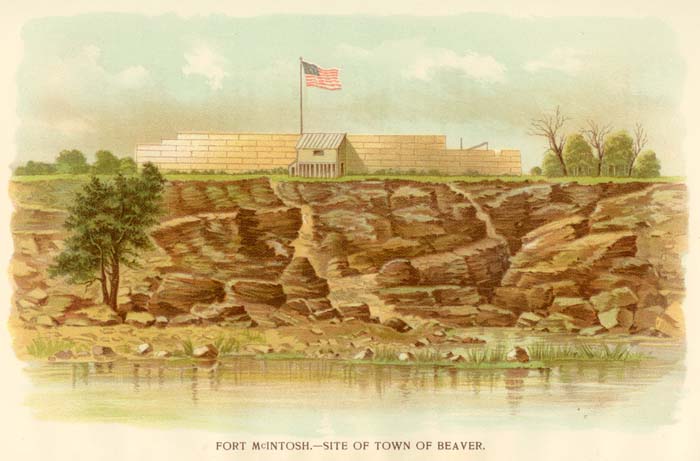 |
 |
|
Photographs (left to right): Wakulla Springs, Florida; Alligator, Florida; Sap Sucker Bark, Florida
The Wampum Belt Archive
Wampum Belts in Paintings and other Art Media
Fort McIntosh Treaty 1785
Fort McIntosh 1785
Site of the Town of Beaver, PA
Courtesy: US Government War Archives
http://www.usgwarchives.net/pa/1pa/1picts/frontierforts/ff35.html
Shawnee Black/White Belt
(Hypothetical Reproduction- Richard D Hamell Feb 21 2020
Original Size: |
? |
Reproduction: |
Length: 24 inches. Width: 5 inches. 44 inches with fringe |
Beads: |
120 columns. Rows 10. |
Materials: |
Warp: Deer leather. Weft. Artificial Sinew. Polymer Beads |
Description:
Ohio History Encyclopedia noted:
"In 1785, the Confederation Congress dispatched Richard Butler and Samuel Holden Parsons to negotiate a treaty with the Shawnee Indians. The Shawnees refused to accept the terms of the Treaty of Fort McIntosh, and the American government hoped that war could be avoided with the Indians. The negotiations took place at Fort Finney, near modern day Cincinnati, Ohio. The Shawnees refused to accept the land set aside for them in the Treaty of Fort McIntosh. They gave the American negotiators a belt of black wampum, a sign of war. Butler and Parsons threatened the Shawnees with attack if they refused to the Americans' demands. Shawnee leaders, fearing the power of the American military, agreed to the Treaty of Fort Finney, also known as the Treaty at the Mouth of the Great Miami, on January 31, 1786. The Shawnee leaders in attendance agreed to relinquish all claims to their land in southwestern Ohio and southern Indiana. They promised to move to the land set aside for them in the Treaty of Fort McIntosh. The Americans also promised to keep white squatters from settling on land reserved exclusively for the Indians.
Although some of the Shawnee Indians signed the treaty, many of them refused to abide by it. Most still claimed all of the land north of the Ohio River. White settlers now viewed that land as theirs and began to move into the region. Violence continued between the Americans and Indians in the Ohio Country."
Fort Finney (http://www.whitewaterriverfoundation.org/PointsofInterest/fortfinney.html)
On January 14, 1786, there were 450 Indiana present, which greatly outnumbered the U.S. troops. About 130 were Delaware and Wyandot, with women and children among them. For entertainment, dancing was held in the council house outside of the fort. The war dance was performed in breechcloth and their faces and bodies were painted. Tomahawks and scalping knives were present, which caused the commissioners and soldiers to sense danger. The commissioners had their soldiers cook and serve food to the Indians in the council house. As the Shawnees always selected old and decrepit women to do the cooking, when they saw the U.S. soldiers serving food, they laughed and shouted at them in derision, crying out, "Here come the old women with warrior coats on"! an Indian's most insulting contempt was to call someone an "old woman".
Then on January 31st, three hundred face-painted Indian warriors filed into the council house. Their demeanor was sullen and suspicious. a warrior of the Delaware named Bohengehelus addressed General Clark. "I assigned the hatchet into the hands of my kings. I have ceased to war and have come to council fire to promote peace..." another Delaware chief, Texapxie, advised the Shawnee to follow his example, to lay down the hatchet and nevermore take it up. The first article of the treaty required that three Indian hostages be held until all the U.S. prisoners, white and black, taken in the war with the Shawnee Nation, were restored. This demand angered the Shawnee. The Shawnee's old council sachem (the supreme chief), named Molunthy, and the war chief, Kehenepelathy, took the lead. The war chief made a boisterous and threatening speech, which caused his warriors to whoop at every pause. His speech briefly stated that it was not their custom to give hostages and that God had given them the land and they did not understand why they were expected to measure it out. He stated that they wanted no part in trading land for goods. The war chief then flung upon the table a black and white wampum (belt) to signify peace or war, the choice to be made by the commissioners.
General Clark pushed the sacred wampum off the table with his cane. Every Indian started from his seat and gave out peculiar savage sounds. Clark then rose, stamped his foot on it, then ordered them to leave. They did so and all night debating was heard in the bushes near the fort while the troops held their guns ready. The war chief was for war, but the old Shawnee sachem, Molunthy, was for peace. The latter prevailed and the next morning he presented a white string, canceling out what the chief warrior had said, and prayed that they would have pity on the women and children. After the treaty was signed on February 1st, five Shawnees were left as hostages. This was the first surrender of territory by Indians west of the Alleghenies. It was the first acknowledgement by any sovereignty of the United states.
By the treaty at Fort Finney, the United States was acknowledged to be the sole and absolute sovereign of all the territory ceded to them by the treaty with Great Britain in 1784. The Shawnee were to leave southern Ohio and their hunting grounds would become Indiana. Beyond which lines none of the citizens of the United states shall settle, nor disturb the Shawnees in their settlement possession. This laid the foundation for settling the Northwest Territory, which had begun to be surveyed in this area in 1798. The treaty failed entirely in securing peace, as the tribes more distant west than the Shawnee were in no way disposed to cease their incursions. The troops remained at Fort Finney for several months. St. Patrick's Day was celebrated by getting drunk and by evening only six men were fit for duty. The next day one man died from the effects of alcohol. Lt. Denny's diary at the fort ends in July 1786, when he was ordered to Fort Harmar. It is unknown when Fort Finney was abandoned but it was before the settlement of North Bend, Ohio, by Judge John Cleves Symmes in 1789. Note: General George Rogers Clark was a hero of the American Revolution. His brother was William Clark, who in 1804 accompanied by Meriwether Lewis in an exploration of the western states (Burgess, 1885).
Description (US Government War Archives):
In speaking of the treaty of the State with the Indians made at Fort McIntosh in January, 1785, the Hon. Daniel Agnew says: (34.)
"By a treaty made at Fort Stanwix (now Rome, N. Y.), on the 5th of November, 1768, between the Penns and the Six Nations, the Indian title was extinguished westward by lines which became the eastern boundary of the territory included in the next treaty with the Six Nations, made at Fort Stanwix, on the 23d of October, 1784, by commissioners of the State of Pennsylvania. There were certain tribes in Western Pennsylvania not parties to the treaty of 1784, chiefly Wyandots and Delawares, then actually occupying the western territory. It became necessary to obtain the relinquishment of their title, in order to quiet the Indian claim to the lands included in the treaty of October 23d, 1784. The treaty of the Pennsylvania Commissioners with the Wyandots and Delawares at Fort McIntosh, terminated in a deed dated January 21st, 1785, conveying the Indian title by the same boundaries contained in the treaty of October 23d, 1784."
"Thus," in the language of Justice Agnew in his monograph on Fort McIntosh, "we have seen that, almost forgotten by the public, and its site scarcely recognizable now, Fort McIntosh was once a place of note, and the scene of important operations and events. Little over a century has passed, and few now can estimate the change. Then a wilderness where red men roamed and a tomahawk and scalping knife gleamed— now a population of 50,000 souls fill the small county of Beaver, crowded with mills and factories."
Question: Was there an exchange of treaty belts?
Fort McIntosh Treaty 1785 https://en.wikipedia.org/wiki/Treaty_of_Fort_McIntosh
The Treaty of Fort McIntosh was a treaty between the United States government and representatives of the Wyandotte, Delaware, Chippewa and Ottawa nations of Native Americans. The treaty was signed at Fort McIntosh (present Beaver, Pennsylvania) on January 21, 1785. It contained 10 articles and an addendum.
In a follow up to the Treaty of Fort Stanwix (1784), where the Seneca nation had given up claims in the eastern extension of Ohio Country in northern Pennsylvania, the American government sought a treaty with the remaining tribes having claims in the Ohio Country. The United States sent a team of diplomats including George Rogers Clark, Richard Butler, and Arthur Lee to negotiate a new treaty. In January 1785, the representatives of the two sides met at Fort McIntosh at the confluence of the Ohio and Beaver Rivers.
Connecticut (Western Reserve in the northeast) and Virginia (Military District in the central south) had residual claims in Ohio Country and would have to be distinguished from Indian Country. Among the only known incursions of the Whiteman in Ohio Country were the U.S. revolutionary fort Fort Laurens in the east, and the old British trading post, Fort Pickawillany in the west.
Essentially, the treaty carved a large Indian reservation out of Ohio Country, whose boundaries were the Cuyahoga and Muskingum rivers in the east, a line between Fort Laurens and Fort Pickawillany (Piqua) in the south, the Great Miami River and St. Mary's River in the west, and Maumee River and Lake Erie in the north. The area comprised about 1/3 of modern day Ohio in the northwest, and a wedge of eastern Indiana extending to Kekionga (future Fort Wayne). Areas outside the boundary in eastern and southern Ohio belonged to the Whiteman. The tribes also ceded areas surrounding Fort Detroit and Fort Michilimackinac to the United States and gave back captives taken in raids along the frontier.
Most Ohio Country tribes did not subscribe to the treaty, particularly the Shawnee who lost all of their lands in southwestern Ohio. The treaty seeded the formation of the Western Confederacy later the same year. Settlers as well as Indians encroaching on the boundary line presaged the Northwest Indian War. An almost identical Treaty line, except the extension in Indiana, was later circumscribed in the Treaty of Greenville following the conclusion of the war.
Reference:
Buress, Majorie. 1885. History of Dearborn County and Ohio Counties, Indiana.
Buress, Marjorie. 1885. The Mouth of the Great Miami.
http://www.shawnee-bluejacket.com/Gallery.htm
Ohio History Encyclopedia. 2012. http://www.ohiohistorycentral.org/entry.php?rec=1425
US Government War Archives: http://www.usgwarchives.net/pa/1pa/1picts/frontierforts/ff35.html
 |
 |
 |
 |
 |
 |
 |
 |
|---|


